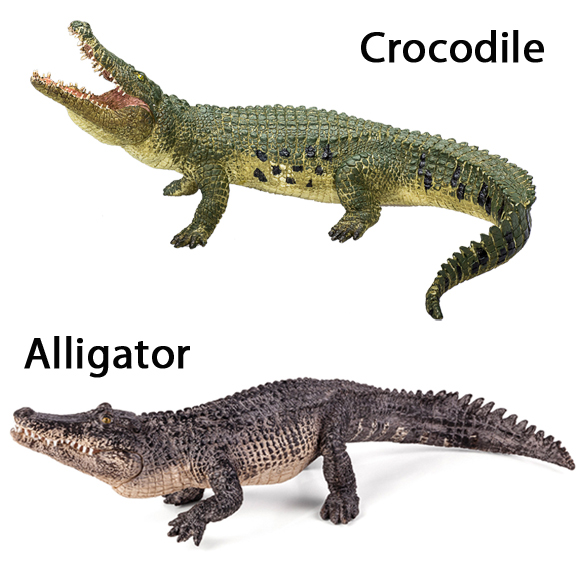New Study Shows that a Number of Crocodilians Eat Fruit
They may have a blood thirsty reputation, after all, a number of species are man-eaters and all crocodiles have strong jaws and a powerful bite but a new study has revealed that a significant proportion of crocodilians eat fruit. Nile crocodiles (Crocodylus niloticus) consume fruit as does the American alligator (Alligator mississippiensis), both species are dangerous and are known to attack people. Surprising revelations, but it turns out that these reptiles are not entirely carnivorous. In a study by the Wildlife Conservation Society, one that no doubt involved studying lots of crocodile poo as well as reviewing a substantial amount of literature, it seems that more than dozen crocodile species enjoy an occasional taste of fruit to go along with their normal diets of fish, mammals, amphibians, other reptiles and birds.
The Difference Between a Crocodile and an Alligator
Crocodiles Dispersing Seeds
This research, which has been published in the academic publication the Journal of Zoology, provides new insight into the possible role that crocodilians, some of which have large territories, may play in forest regeneration through digesting and passing seeds from fruits. Some seeds and nuts are regurgitated whilst others pass through the digestive tract. Those seeds that do and get deposited after being passed through a crocodile’s stomach and intestines, even get supplied with their very own nutrient rich pile of dung.
Chemical and mechanical scarification of seeds probably occurs in the stomach, but what effects these processes have on seed viability is unknown. Because crocodilians have large territories and undertake lengthy movements, seeds are likely transported well beyond the parent plant before being voided. Little is known about the ultimate fate of seeds ingested by crocodilians, however, deposition sites could prove suitable for seed germination.
Eighteen Species Studied
The researchers looked at eighteen species of crocodilian ranging from the American alligator to the ferocious Nile crocodile and found thirteen of the species consumed some form of fruit and vegetable matter including a variety of berries, legumes, nuts, and grains. Some of the plant material ingested, may have been involuntary, incidental and as a consequence of capturing and eating herbivores, however, evidence was gathered to show that plant matter was deliberately consumed and occasionally in surprisingly large quantities.
Fruit Eating Crocodiles
Despite having remained virtually unchanged since the time of the dinosaurs, much remains to be learned about how crocodilians process carbohydrates and other plant-based nutrients. Fruit eating and the consumption of plant matter must yield some nutritional rewards for crocodilians.
Seed dispersal by reptiles is known as saurochory and it had been thought that these carnivores were incapable of digesting vegetable proteins. However, evidence of fruit eating (frugivory), was found in more than seventy percent of the species for which there was dietary information available. Thirty-four families and forty-six plant genera were consumed by crocodilians, the majority were fleshy fruits, how crocodiles find fruits to consume is poorly understood, but crocodiles probably find plant food by a combination of airborne and waterborne cues. Large fruits falling into water and making a splash may also prompt crocodiles to investigate the disturbance and feed.
Probably Underreported
Commenting on the research, lead author Steven Platt of the Wildlife Conservation Society stated:
“Although underreported, fruit eating appears widespread among crocodilians. Given the biomass of crocodiles in many subtropical and tropical wetlands and their capacity for ingesting large numbers of fruits, we consider it likely that crocodilians function as significant seed dispersal agents in many freshwater ecosystems.”
A spokes person from Everything Dinosaur suggested that seed dispersal could have been a role carried out by prehistoric crocodiles. During the Cretaceous, Crocodyliformes and even champsosaurs could have carried out a similar function.
The spokes person said:
“This study shows that more than half the crocodilian species alive today consume fruit and other vegetable matter, it just goes to show how remarkable these reptiles are and how important these apex predators might be to the maintenance of diversity of both fauna and flora in their habitats.”



Leave A Comment